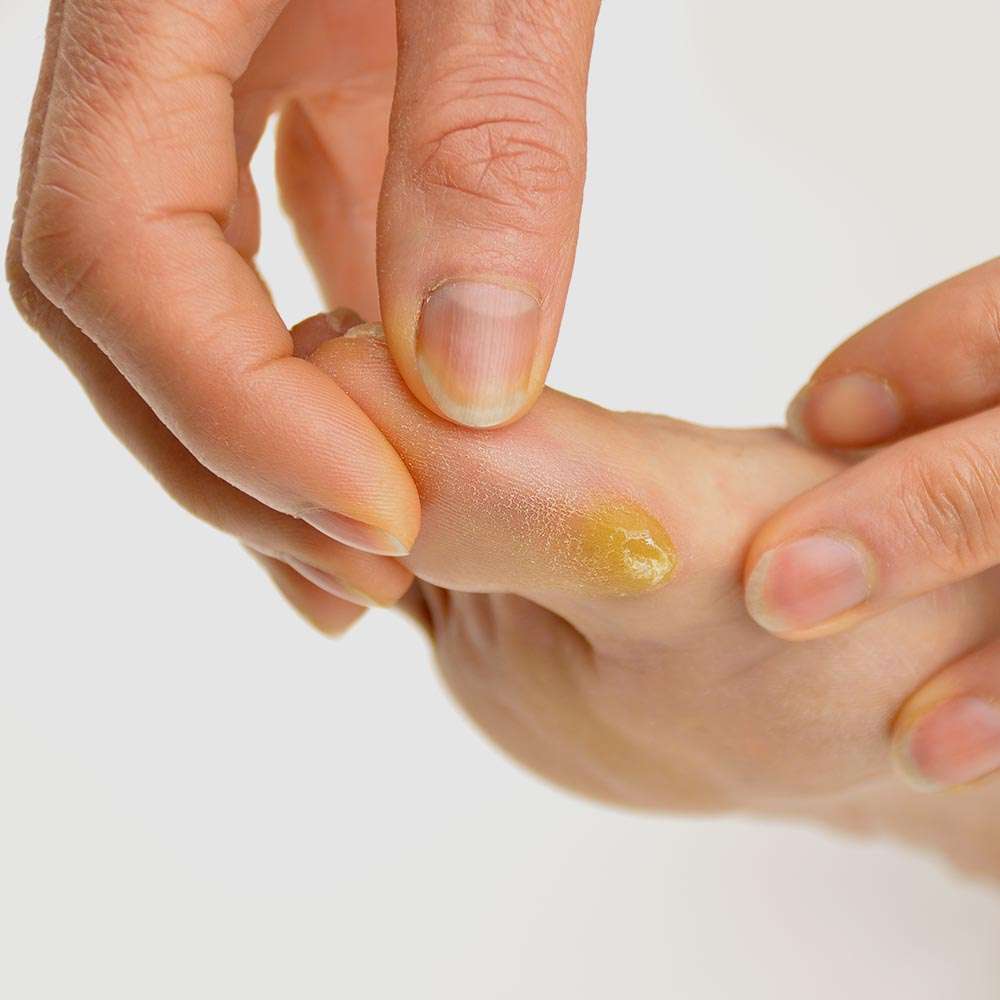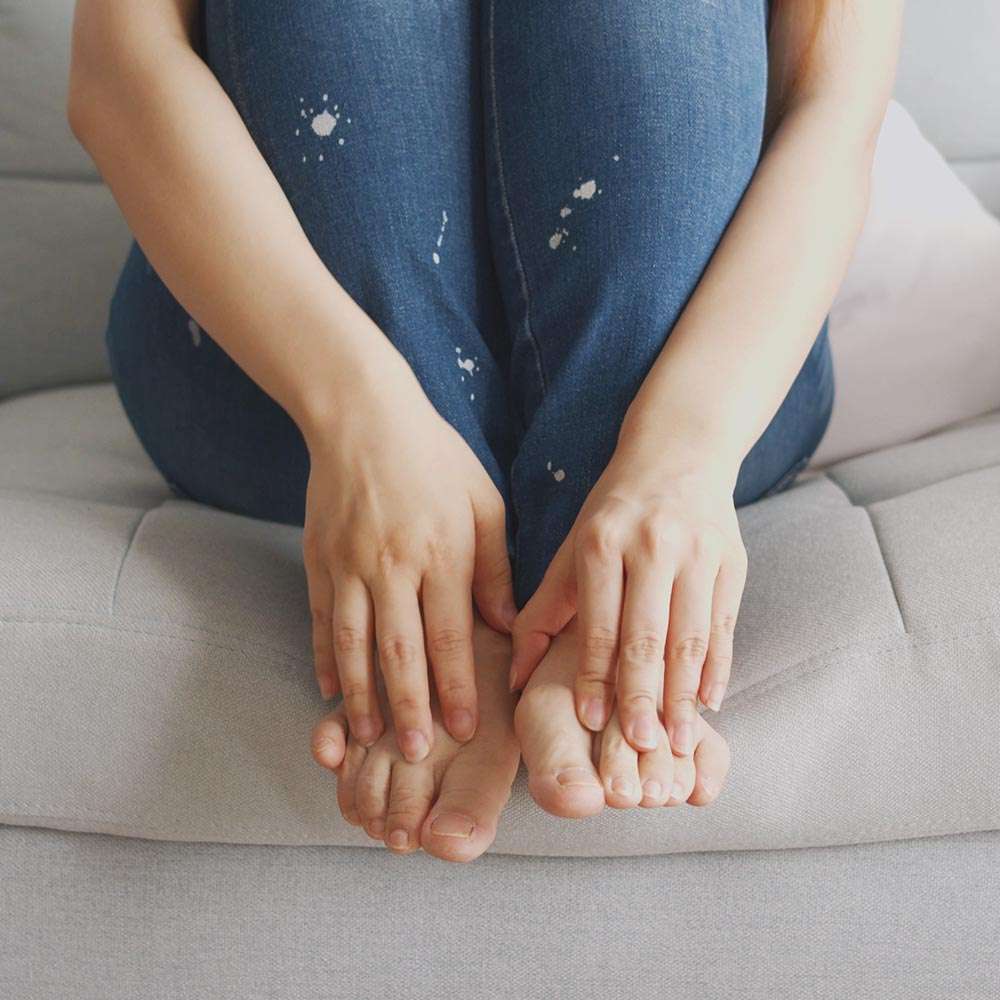Calluses aren’t usually serious, but they can become uncomfortable or painful if the thick skin presses on the tissue underneath. It’s best to treat them early before they get worse.
Remove and prevent calluses

- Moisturised skin stays soft and less likely to form hard spots
- Repeated pressure and friction can lead to thick, tough patches called calluses
- Compeed® Callus Plasters help protect the area, lock in moisture, and support faster healing
Jump to:
What helps with calluses?
How to remove calluses – step by step
- Step 1: Soften the callus
Soak your hands or feet in warm, soapy water. Add a bit of Epsom salt or baking soda to help loosen the skin and ease any discomfort.
Try an exfoliating foot cream or foot mask — these are designed to soften hardened skin.
Over-the-counter treatments with salicylic acid can help break down dead skin. Just be cautious, as they can sometimes irritate the healthy skin around the callus.
For day-to-day relief, Compeed® Callus Plasters offer a simple way to soften the area. Thanks to hydrocolloid technology, they create a moisturising environment while cushioning your skin. - Step 2: Gently file the area
Once the skin has softened, use a pumice stone to gently remove the dead skin. Wet the stone first, then move it in small circles or side-to-side motions. You can also use a callus file if you prefer — just take care not to overdo it. Removing too much skin at once can lead to soreness or even infection, so work gradually and repeat the process as needed.
- Step 3: Moisturise regularly
After exfoliating, it’s important to hydrate the area. A good foot or hand cream will help keep the skin soft and smooth. You can also pop on a Compeed® Callus Plaster afterwards to lock in moisture and protect the area as it heals.

Compeed® callus plaster
How can I prevent calluses?
- Try to avoid shoes that put extra strain on your feet, like high heels or styles with a curved sole that throw off your natural balance
- If smart shoes are part of your work outfit, switch to something more comfortable for your commute, your feet will thank you
- Keep your shoes in good condition. Worn-out soles don’t cushion your feet properly and can lead to pressure points. If you notice your shoes wearing unevenly, it might be worth speaking to a podiatrist or orthopaedic specialist about insoles or corrective footwear
- When using tools or doing manual work, wear padded gloves to protect your hands and prevent friction-related calluses.
- A bit of regular care and the right support can go a long way in keeping your skin smooth and comfortable.
If you have to wear stylish (and therefore often non-ergonomic) shoes for work, then at least wear well-fitting, comfortable shoes on the way there and back home.
When to get medical advice?
Enjoying this article?
Rate this article if you find this helpful.

